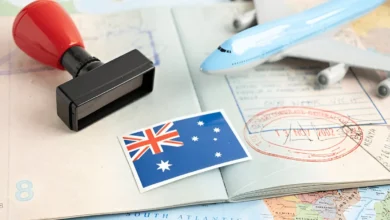
In a world where art and science often seem at odds, ambigrams stand as a testament to the seamless union of these two domains. At the intersection of typography and geometry, ambigrams offer an enticing blend of creativity and mathematical precision. But what is the underlying mathematics that facilitates the creation of these symmetrical wonders? In this exploration, we dive deep into the geometry of symmetrical design and the pivotal role it plays in crafting ambigrams.
The Essence of Ambigrams
Ambigrams, for those unfamiliar, are designs that retain legibility or meaning when viewed from multiple perspectives, such as when rotated or mirrored. The charm of an ambigram lies not just in its visual appeal but also in the intricacies of its design, which often requires a sound understanding of geometric principles.
Symmetry: The Foundation of Ambigrams
Types of Symmetry in Ambigrams
- Rotational Symmetry: This is the most common type of symmetry in ambigrams. A word or phrase designed with rotational symmetry will appear the same or present a different word when rotated, typically by 180 degrees.
- Reflectional Symmetry: Here, the word or phrase mirrors along a vertical or horizontal axis, creating a design that’s symmetrical on either side of the line.
- Translational Symmetry: Less common in ambigrams, this involves repeating the word or phrase in a pattern, similar to a tessellation.
Mathematical Concepts in Symmetry
- Transformation Geometry: This branch of geometry involves moving a shape or design without changing its size or orientation. In the context of ambigrams, this can mean rotating or reflecting a word to create a symmetrical design.
- Angle of Rotation: Especially crucial for rotational ambigrams, the angle of rotation determines how much the design needs to be turned to achieve the desired symmetry.
- Axes of Symmetry: These are imaginary lines where the design can be folded in half, with each side mirroring the other perfectly.
The Golden Ratio and Ambigrams
Often hailed as the ‘divine proportion’, the Golden Ratio (approximately 1.61803398875) has been a cornerstone in art and architecture for centuries. In the realm of ambigrams, this ratio can be used to balance the design, ensuring that each half (or segment, in the case of rotational ambigrams) maintains visual harmony and proportionality.
Digital Tools and Mathematical Precision
The advent of digital tools, like the free online Ambigram creator, has made the process of designing Ambigrams more accessible. These tools often utilize algorithms that incorporate geometric and mathematical principles, ensuring the final design maintains the desired symmetry and balance.
Challenges in Ambigram Design
While the underlying mathematics provides a framework, designing ambigrams is not always a straightforward process. Challenges include:
- Letterform Limitations: Not all letters lend themselves well to symmetry. Designers often have to get creative in merging or tweaking letterforms to achieve the desired effect.
- Maintaining Legibility: Striking a balance between symmetry and legibility can be challenging. A design might be perfectly symmetrical but unreadable.
- Design Complexity: The more complex the word or phrase, the harder it becomes to maintain symmetry without compromising on aesthetics or legibility.
Conclusion: A Confluence of Art and Mathematics
Ambigrams serve as a poignant reminder that art and science, or more specifically, design and mathematics, can coexist in harmony. They challenge designers to think beyond conventional typography, pushing the boundaries of creativity while adhering to geometric and mathematical constraints. Whether you’re a seasoned designer, a math enthusiast, or someone who appreciates the beauty of symmetrical designs, ambigrams offer a world of exploration and wonder.













